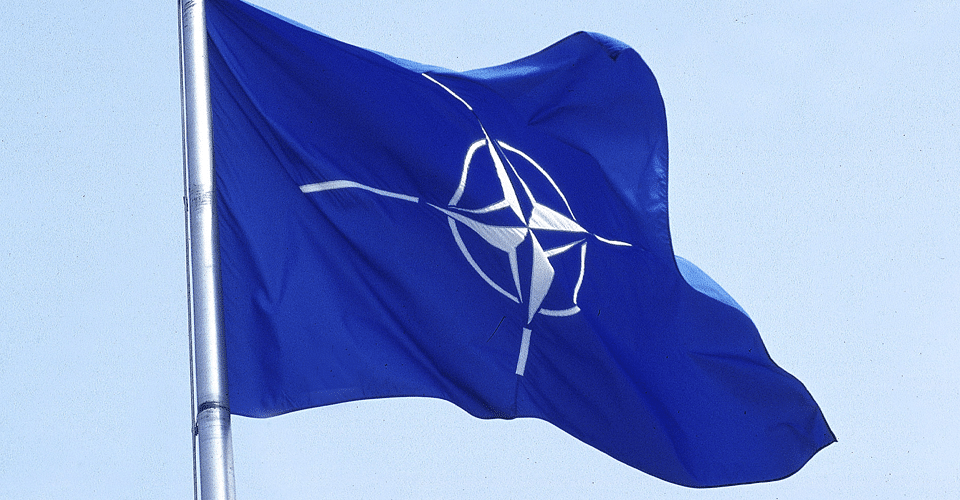Коронавирус или COVID-19 — острая респираторная инфекция, передающаяся воздушно-капельным путем и поражающая, преимущественно, органы дыхания, реже желудочно-кишечный тракт.
Близкого контакта с зараженным человеком достаточно, чтобы вирусные частицы проникли в слизистые оболочки назальных ходов и ротоглотки.
Специфическое лечение пациентов COVID-19 не предусмотрено: обычно назначают противовирусную терапию и симптоматические препараты.
Основные симптомы инфекции — температура, ломота в теле, недомогание, снижение обоняния.
Однако, эти симптомы характерны и для других респираторных инфекций, в том числе ОРВИ, гриппа, простуды.
Как понять, что человек заболел и идентифицировать коронавирус от привычных нам простудных заболеваний и ОРВИ? Что делать, если есть кашель, недомогание и ломота в мышцах? На все эти вопросы помогут ответить консультанты центра Ковид-19 в Украине.
Коронавирус или ОРВИ — как понять, что болен гриппом или простудой
Специалисты всего мира рекомендуют рассматривать любой случай гипертермии и общего недомогания, как признак COVID.
К сожалению, даже врач только на основании осмотра и жалоб больного не в состоянии поставить точный диагноз.
Большое клиническое значение в первичной диагностике коронавирусной инфекции являются лабораторные тесты, а именно анализ крови на антитела.
Мазки из назальных ходов и гортани не дают 100% результата и часто дают ложноположительные результаты.
В ситуации высокой эпидемиологической опасности, рисков осложнений и тяжелых последствий для пациентов из группы риска (пожилых и взрослых с сопутствующими заболеваниями) рекомендуется сдать ПЦР-тест на коронавирусную инфекцию при появлении специфических симптомов.
Симптомы коронавирусной инфекции
Инкубационный период коронавируса варьирует от 2 до 14, а иногда и 21 день. Чаще всего с момента заражения до первых симптомов проходит 5-7 дней. Основными симптомами, по которым характеризуют коронавирус, являются:
- температура (от субфебрилитета до высоких значений);
- сухой кашель с малым количеством отделяемой мокроты;
- сдавленность в грудине, которая усиливается в положении на спине;
- одышка;
- снижение или полная утрата обоняния.
В редких случаях возникают головные боли, расстройство стула (диарея), тахикардия (повышенная частота сердцебиений).
Были зарегистрированы случаи кровохарканья, однако в этом случае коронавирус протекает на фоне перенесенных легочных патологий любого иного генеза (например, отек легких, туберкулез, операции и шрамы на стенках органа в анамнезе).
Чаще всего заболевание завершается выздоровлением, специфических мер по лечению не предусмотрено.
Основное лечение — этиотропная противовирусная и симптоматическая терапия.
Осложненное течение коронавирусной инфекции встречается только у одного из пяти-шести пациентов.
У пожилых и молодых людей с отягощенной историей болезни могут присоединяться такие симптомы, как повышение артериального давления, посинение носогубного треугольника при одышке (цианоз), озноб.
Течение коронавируса по общепринятым критериям можно выделить по дням:
- 1-3 день – температура, боль и ломота в мышцах, недомогание;
- 4-5 день – ощущение сдавленности в грудине, приступы сухого кашля, который усиливает дискомфорт и боль за грудиной;
- 6-7 день – усугубление легочных симптомов, при осложнениях — нарастание дыхательной недостаточности и необходимости кислородной поддержки;
- 8-10 день – при легком или среднетяжелом течении нормализуется температура;
- 11-14 день – восстанавливается функция органов и систем.
Средняя продолжительность заболевания 14-21 день.
Обычно отрицательные тесты на коронавирусную инфекцию регистрируют на 21-25 день после улучшения общего самочувствия.
Простуда или коронавирус
Простуду легко отличить от гриппа, ОРВИ и коронавируса.
Проблема в том, что любая простуда может привести к развитию острых респираторных инфекций и бактериальных осложнений.
Простуда в большинстве случаях протекает легко.
На первый план выходит ринорея, заложенность носа, недомогание, температура повышается редко и не выше 37,5 градусов.
Обращаться за медицинской помощью необходимо, если появляется ряд настораживающих симптомов:
- высокая температура, которая сложно сбивается привычными жаропонижающими препаратами;
- ощущение сдавленности в грудине;
- дискомфорт и психоэмоциональная нестабильность, страх при одышке, неполном наполнении груди;
- учащение дыхания;
- цианоз — посинение носогубного треугольника;
- снижение концентрации кислорода в крови (оптимально, 98-99%, сатурация ниже — повод срочно обратиться к врачу).
Тем более, если у больного тяжесть состояния не соответствует течению ОРЗ или респираторным инфекциям, важно обратиться к врачу, вызвать неотложную помощь.
Отличительные особенности ОРВИ
Для острых респираторных инфекций характерно сезонное течение. К привычным признакам относят отечность ротоглотки и слизистых носа, ринорею — течение из назальных ходов, чихание и другие симптомы:
- конъюнктивит;
- упадок сил, недомогание;
- резь в глазах, светобоязнь;
- боль и ломота в теле;
- першение в горле;
- сонливость, нарушение сна;
- увеличение подчелюстных лимфоузлов.
Больные с ОРВИ теряют аппетит, апатичные. В отличие от коронавируса, респираторные инфекции поражают назальные ходы с обязательным возникновением отечности с заложенностью и ринореей.
Сначала отделяемое жидкое и прозрачное, в дальнейшем возможно присоединение бактериальной инфекции, сгущение слизи, присоединение гнойного отделяемого.
Инкубационный период ОРВИ короче, всего 2-3 дня. Коронавирус может пребывать в организме более 14 дней.
Симптомы на ранней стадии идентичны, однако в последующем несколько различаются. Достоверно идентифицировать одну клиническую ситуацию от другой поможет анализ крови.
Основные отличия коронавируса от гриппа
Грипп протекает несколько иначе, чем COVID-19. Клиницисты рекомендуют обратить внимание не на тяжесть течения гриппа, а на некоторые клинические аспекты:
- У привычного нам вируса гриппа есть инкубационный период, кульминация и стадия разрешения. Первый этап короткий, длится до 3 дней. Начало острое, тяжелое. Основные симптомы: высокая температура, недомогание, жжение кожи, ломота в мышцах, сонливость. При COVID ломота в суставах редкость, однако, спутать суставные боли с мышечными достаточно просто.
- Грипп встречается одинаково у детей и взрослых. Коронавирусной же инфекцией болеют, преимущественно, взрослые. Статистика со времен пандемии коронавируса говорит о проценте заражения: дети 18-25% случаев (из них 0,1-0,5% тяжелое течение), взрослые и пожилые 80% (из них 15-25% с тяжелым или среднетяжелым течением).
- Осложнения и смертность от коронавируса гораздо выше, чем при привычном вирусе гриппа. Летальность наступает от нарастания дыхательной недостаточности на фоне пневмонии или нарушении функции легких. При гриппе осложнения чаще наблюдаются у детей раннего возраста, а также у лиц с отягощенной историей болезни.
Сегодня точно определить взаимосвязь одновременного появления коронавируса и вируса гриппа невозможно, однако есть случаи выявления в анализах крови вируса COVID-19 и H1N1.
Тяжесть сочетанного течения вирусных инфекций проследить сложно.
В основном вирусы из разных групповых сегментов схожим образом воздействуют на клетки, поэтому последний будет влиять на организм в меньшей степени, чем первый вирусный штамм.
Коронавирусный кашель – есть ли отличия
Другим важным симптомом является сухой кашель, который сопровождает множество отоларингологических заболеваний.
Специалисты говорят, что не каждый кашель или покашливание нельзя расценивать как заражение коронавирусом.
На самом деле, сухой кашель встречается не у каждого больного, а лишь у 45-47% всех заразившихся. Симптомы кашля при коронавирусной инфекции:
- першение и зуд в горле;
- дискомфорт при глотании;
- ощущение инородного тела;
- сухой кашель может меняться на продуктивный с незначительным отделением мокроты.
Отделение мокроты при COVID-19 происходит после внедрения вирусных частиц в ткани легких, а затруднительная эвакуация слизи обусловлена сужением бронхиол.
На фоне развития пневмонии — основного осложнения коронавируса, отделяемое становится обильным, густым с примесью крови и гноя.
Схожий кашель возможен при многих заболеваниях лор-органов, однако по мере развития патологического процесса прослеживаются принципиальные различия:
- насморк, хроническая ринорея — приступ кашля с отделением обильной мокроты возникает с утра;
- ларингит, трахеит, ринофарингит — сухой кашель быстро становится продуктивным, появляется боль в горле, приступы мучительные, нередко завершаются рвотой;
- бронхит — воспаление слизистых оболочек бронхов с продуктивным лающим кашлем.
Аллергический кашель развивается внезапно, сопровождается отеком гортани, часто без отделения мокроты. Приступы проходят так же, как и возникают — сразу после прекращения влияния провоцирующего аллергена.
Диагностика и лечение коронавируса, ОРВИ, гриппа в Украине
К сожалению, самостоятельно отличить симптомы коронавирусной инфекции от проявлений ОРВИ или гриппа невозможно.
Сегодня в Украине основным методом диагностики остается ПЦР-тест (соскоб с поверхности задней стенки слизистой глотки).
Также, информативным методом считается именно анализ крови на антитела, который с точностью 99% указывает на наличие или отсутствие коронавирусной инфекции.
Повышение в крови количества иммуноглобулинов А и М свидетельствуют об активной, острой стадии коронавирусной инфекции, а увеличение в крови количества иммуноглобулинов G-точный знак, что организм перенес коронавирусную инфекцию и идет формирование иммунитета к данному вирусу.
Даже после получения подтверждения наличия вируса в организме, это не означает, что требуется госпитализация в специализированный центр или в стационар, ключевым есть самочувствие заболевшего.
В случае нарастания симптомокомплекса и появления признаков дыхательной недостаточности, лечение коронавируса проводится в специализированных центрах страны.


 3619
3619












